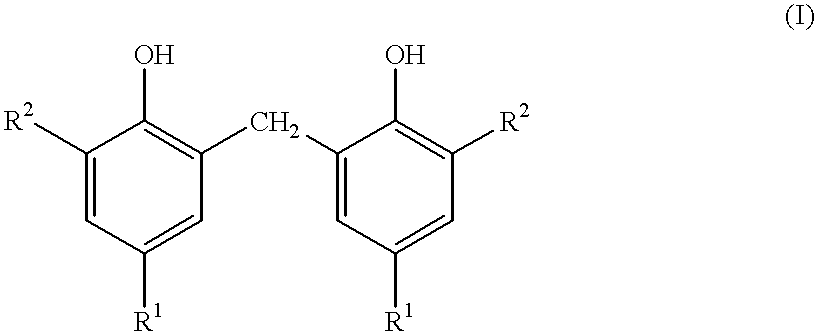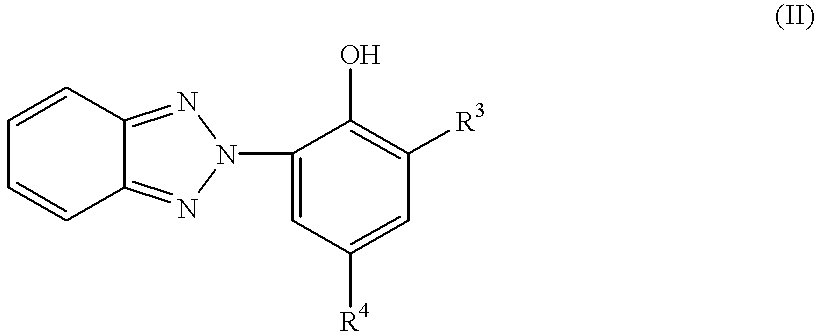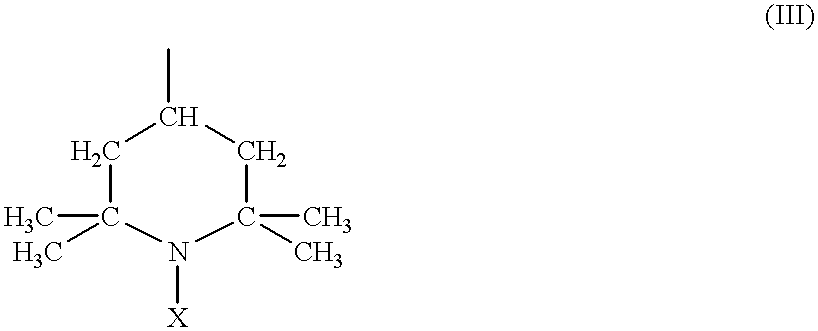Rubber composition for a colored tire
a technology of rubber composition and colored tires, applied in the field of rubber compositions for tires, can solve the problems of vulcanized rubber compositions of essentially unsaturated, likely to deteriorate more or less rapidly, antioxidants described,
- Summary
- Abstract
- Description
- Claims
- Application Information
AI Technical Summary
Benefits of technology
Problems solved by technology
Method used
Image
Examples
Embodiment Construction
In the following examples, the rubber compositions are prepared by processing the diene elastomers according to known techniques, e.g., by thermomechanical working in a internal paddle mixer, followed by mixing on an external mixer.
By way of example, the procedure is as follows: the elastomer or the mixture of elastomers is introduced into an internal mixer, filled to 70%, the temperature of which is about 60.degree. C., then after a suitable kneading time, for example of the order of I minute, all the other ingredients are added with the exception of the vulcanization system; the thermomechanical kneading work is continued until a dropping temperature of 175.degree. C. The mixture thus obtained is recovered, then the vulcanization system is added on an external mixer (homo-finisher) at 30.degree. C. The vulcanization is effected at 150.degree. C. for 45 minutes.
In this test, seven red rubber compositions intended for the manufacture of tire treads are compared.
These compositions ar...
PUM
| Property | Measurement | Unit |
|---|---|---|
| glass transition temperature | aaaaa | aaaaa |
| glass transition temperature | aaaaa | aaaaa |
| elongation | aaaaa | aaaaa |
Abstract
Description
Claims
Application Information
 Login to View More
Login to View More - R&D
- Intellectual Property
- Life Sciences
- Materials
- Tech Scout
- Unparalleled Data Quality
- Higher Quality Content
- 60% Fewer Hallucinations
Browse by: Latest US Patents, China's latest patents, Technical Efficacy Thesaurus, Application Domain, Technology Topic, Popular Technical Reports.
© 2025 PatSnap. All rights reserved.Legal|Privacy policy|Modern Slavery Act Transparency Statement|Sitemap|About US| Contact US: help@patsnap.com



